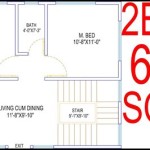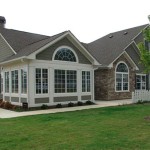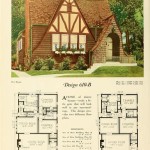Cement block house plans are comprehensive blueprints that provide detailed instructions for constructing a house using cement blocks as the primary building material. These plans outline every aspect of the construction process, from the foundation to the roof, and include specifications for materials, dimensions, and construction techniques.
Cement block houses are a popular choice for builders due to their durability, fire resistance, and affordability. The plans for these houses are typically created by architects or engineers and can be tailored to suit the specific needs and preferences of the homeowner. With careful planning and execution, cement block house plans can result in the construction of a strong, energy-efficient, and aesthetically pleasing home.
In the following sections, we will delve into the details of cement block house plans, exploring their benefits, components, and the considerations involved in their design and implementation.
When considering cement block house plans, there are several key points to keep in mind:
- Durable and long-lasting
- Fire-resistant and low-maintenance
- Energy-efficient and cost-effective
- Versatile and customizable
- Require skilled labor for construction
- May have higher upfront costs
- Prone to moisture issues if not properly sealed
- Can be aesthetically limited compared to other building materials
By carefully considering these factors, homeowners and builders can make informed decisions about whether cement block house plans are the right choice for their needs.
Durable and long-lasting
Cement blocks are renowned for their exceptional durability and longevity, making them an ideal building material for houses. These blocks are manufactured from a mixture of cement, sand, and aggregates, which are then cured to form a solid and robust material. Cement blocks are highly resistant to weathering, insects, and decay, ensuring that cement block houses can withstand the elements and maintain their structural integrity for decades.
The durability of cement blocks is further enhanced by their fire resistance. Cement is a non-combustible material, which means that it will not burn or contribute to the spread of flames. This makes cement block houses highly resistant to fire damage, providing peace of mind to homeowners and protecting their property in the event of a fire.
In addition to their inherent durability, cement block houses require minimal maintenance compared to other types of construction. The non-porous surface of cement blocks resists moisture penetration, reducing the risk of rot and decay. Cement blocks also do not require painting or staining, further reducing maintenance costs and preserving the appearance of the house over time.
The durability and longevity of cement block houses make them a wise investment for homeowners. These houses can withstand the rigors of time and weather, providing a safe and secure shelter for generations to come.
The durability of cement block houses is not only limited to the blocks themselves but also extends to the structural integrity of the entire house. Cement blocks are typically laid in a staggered pattern and mortared together, creating a strong and stable structure. The interlocking nature of the blocks helps to distribute weight evenly, reducing the risk of cracks and other structural problems.
Fire-resistant and low-maintenance
Cement block houses offer exceptional fire resistance and low maintenance requirements, making them an ideal choice for homeowners seeking durability and ease of upkeep.
- Fire resistance
Cement blocks are non-combustible, meaning they will not burn or contribute to the spread of flames. This inherent fire resistance makes cement block houses highly resistant to fire damage, providing peace of mind to homeowners and protecting their property in the event of a fire. The fire resistance of cement blocks is particularly advantageous in areas prone to wildfires or other fire hazards.
- Low maintenance
Cement blocks require minimal maintenance compared to other types of construction. The non-porous surface of cement blocks resists moisture penetration, reducing the risk of rot and decay. Cement blocks also do not require painting or staining, further reducing maintenance costs and preserving the appearance of the house over time. The low maintenance requirements of cement block houses make them an attractive option for busy homeowners or those seeking a low-maintenance lifestyle.
The combination of fire resistance and low maintenance makes cement block houses an excellent choice for homeowners seeking a durable and easy-to-care-for home.
Energy-efficient and cost-effective
Cement block houses offer significant energy efficiency and cost-effectiveness, making them an attractive option for environmentally conscious and budget-minded homeowners.
- Thermal mass
Cement blocks have a high thermal mass, meaning they can absorb and store heat effectively. This thermal mass helps to regulate the temperature inside the house, reducing the need for heating and cooling systems. In warmer climates, cement block houses can help to keep the house cool during the day and release heat at night, reducing energy consumption. In colder climates, the thermal mass of cement blocks can help to retain heat inside the house, reducing heating costs.
- Insulation
Cement blocks can be filled with insulation, further enhancing the energy efficiency of the house. Insulation helps to trap air and reduce heat transfer, keeping the house cooler in the summer and warmer in the winter. By combining thermal mass with insulation, cement block houses can achieve excellent energy efficiency, resulting in lower energy bills and a more comfortable living environment.
- Durability
The durability of cement block houses contributes to their cost-effectiveness. Cement blocks are highly resistant to weathering, insects, and decay, meaning that they require minimal maintenance and repairs over time. This durability reduces the long-term costs associated with maintaining the house, making cement block houses a cost-effective investment in the long run.
- Energy-efficient appliances
Cement block houses are often paired with energy-efficient appliances and systems to further reduce energy consumption. These appliances and systems, such as ENERGY STAR-rated appliances, LED lighting, and solar panels, can significantly lower energy bills and contribute to a more sustainable lifestyle.
The combination of energy efficiency and cost-effectiveness makes cement block houses an attractive option for homeowners seeking a comfortable, environmentally friendly, and budget-conscious home.
Versatile and customizable
Cement block house plans offer a high degree of versatility and customization, allowing homeowners to design and build a house that meets their unique needs and preferences.
- Design flexibility
Cement blocks can be used to create a wide range of architectural styles, from traditional to modern and everything in between. The blocks can be laid in various patterns and configurations to create different textures, shapes, and designs. Cement blocks can also be combined with other materials, such as wood, glass, and metal, to further enhance the design flexibility.
- Custom floor plans
Cement block house plans can be customized to accommodate the specific needs and preferences of the homeowner. The size, shape, and layout of the house can be tailored to suit the homeowner’s lifestyle and requirements. Cement blocks can also be used to create unique features, such as vaulted ceilings, curved walls, and outdoor living spaces.
- Energy efficiency options
Cement block house plans can incorporate various energy-efficient features to reduce energy consumption and lower utility bills. These features may include insulation, solar panels, and energy-efficient appliances. By incorporating energy-efficient features into the design, homeowners can create a comfortable and eco-friendly living environment.
- Sustainable materials
Cement blocks are a sustainable building material that can contribute to a greener and healthier home. Cement blocks are made from recycled materials and are highly durable, reducing the need for frequent repairs and replacements. Additionally, cement blocks can help to improve indoor air quality by absorbing and filtering pollutants.
The versatility and customization options of cement block house plans empower homeowners to create a unique and personalized home that meets their specific needs and desires.
Require skilled labor for construction
The construction of cement block houses requires skilled labor to ensure the structural integrity and durability of the building. Cement blocks are heavy and require proper handling and installation to prevent cracking or other structural issues.
- Foundation and framing
The foundation of a cement block house must be properly prepared and reinforced to support the weight of the block walls. Skilled laborers are needed to ensure that the foundation is level and stable, and that the framing is securely attached to the foundation.
- Block laying
Laying cement blocks requires precision and attention to detail. Skilled laborers know how to properly align and mortar the blocks to create strong and stable walls. They also know how to create various patterns and designs using cement blocks.
- Lintels and supports
Openings for windows and doors require lintels or other supports to distribute the weight of the blocks above. Skilled laborers are needed to properly install these supports to ensure the structural integrity of the building.
- Mortar and grouting
The mortar used to bond the cement blocks together must be properly mixed and applied. Skilled laborers know how to create the right mortar mix for the specific type of cement blocks being used, and they know how to properly apply the mortar to ensure a strong bond.
Hiring skilled laborers to construct a cement block house is essential to ensure the safety and durability of the building. Skilled laborers have the knowledge and experience to properly handle and install cement blocks, creating a strong and lasting structure.
May have higher upfront costs
The upfront costs of building a cement block house can be higher compared to other types of construction due to several factors:
- Material costs
Cement blocks are generally more expensive than other building materials, such as wood or vinyl siding. The cost of cement blocks can vary depending on the size, shape, and quality of the blocks. Additionally, the transportation costs of cement blocks can also add to the upfront costs, especially if the blocks need to be transported over long distances.
- Labor costs
As mentioned earlier, the construction of cement block houses requires skilled labor. Skilled laborers typically charge higher wages than unskilled laborers, which can increase the overall labor costs of the project. The complexity of the design and the size of the house can also impact the labor costs.
- Foundation requirements
Cement block houses are typically heavier than other types of construction, which may require a stronger foundation. A stronger foundation can involve additional excavation, concrete, and reinforcement, all of which can add to the upfront costs of the project.
- Building permits and inspections
Depending on the local building codes and regulations, obtaining building permits and inspections for a cement block house may be more expensive compared to other types of construction. This is because cement block houses require more stringent inspections to ensure structural integrity and compliance with building codes.
It is important to note that the upfront costs of a cement block house can vary depending on a number of factors, such as the size and complexity of the house, the local labor market, and the availability of materials. It is advisable to consult with local contractors and builders to get accurate cost estimates for a cement block house project.
Prone to moisture issues if not properly sealed
Cement blocks are porous and can absorb moisture from the surrounding air and ground. If not properly sealed, moisture can penetrate the cement blocks, leading to a number of problems, including mold growth, efflorescence, and structural damage.
- Mold growth
Mold is a fungus that thrives in moist environments. If cement blocks are not properly sealed, moisture can penetrate the blocks and create a breeding ground for mold. Mold can cause a variety of health problems, including respiratory problems, allergies, and skin infections. It can also damage the interior finishes of the house, such as paint and wallpaper.
- Efflorescence
Efflorescence is the formation of a white or grayish powder on the surface of cement blocks. It is caused by the evaporation of water from the blocks, which brings dissolved salts to the surface. Efflorescence is unsightly and can damage the appearance of the house. It can also be a sign of more serious moisture problems, such as water leakage.
- Structural damage
If moisture penetrates the cement blocks and freezes, it can cause the blocks to crack and deteriorate. This can lead to structural damage to the house, which can be expensive to repair. In severe cases, structural damage can even make the house unsafe to live in.
- Sealing cement blocks
To prevent moisture problems, it is important to seal cement blocks properly. This can be done by applying a penetrating sealer to the surface of the blocks. Penetrating sealers soak into the blocks and create a barrier that prevents moisture from penetrating. It is important to choose a sealer that is specifically designed for cement blocks and to follow the manufacturer’s instructions for application.
By properly sealing cement blocks, homeowners can prevent moisture problems and protect their investment. A well-sealed cement block house will be more durable, healthier, and more aesthetically pleasing.
Can be aesthetically limited compared to other building materials
While cement blocks offer many advantages, they can be aesthetically limited compared to other building materials, such as brick, stone, or wood. Cement blocks have a uniform shape and texture, which can result in a somewhat monotonous appearance.
- Limited color options
Cement blocks are typically available in a limited range of colors, such as gray, tan, and brown. This can make it difficult to match the color of the house to the surrounding environment or to create a specific architectural style.
- Repetitive patterns
The repetitive pattern of cement blocks can create a monotonous appearance, especially on large surfaces. To break up the monotony, architects and builders often use different block patterns, textures, and colors. However, these techniques can add to the cost and complexity of the project.
- Lack of detail
Cement blocks lack the intricate details and textures found in other building materials, such as carved stone or decorative brickwork. This can make it difficult to create visually interesting and unique facades.
- Industrial appearance
Cement blocks have an industrial appearance that may not be suitable for all architectural styles. For example, cement blocks may not be the best choice for a house that is designed to look like a traditional cottage or a Victorian mansion.
Despite these limitations, cement blocks can be used to create aesthetically pleasing houses. By using different block patterns, textures, and colors, architects and builders can create unique and visually interesting facades. Additionally, cement blocks can be combined with other materials, such as wood, glass, and metal, to create a more varied and sophisticated look.









Related Posts








